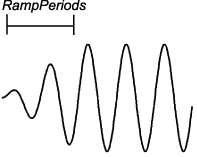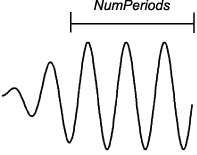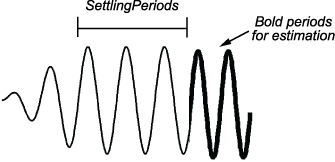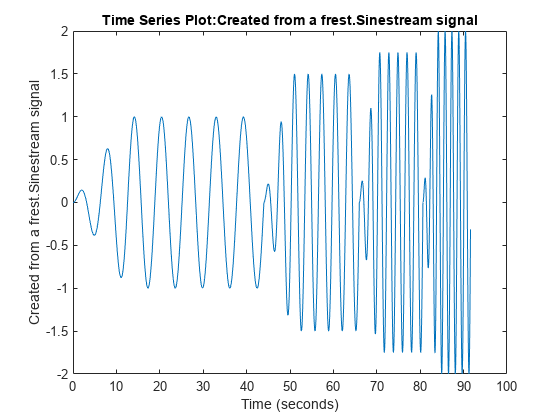frest.Sinestream
Input signal containing series of sine waves
Description
Use a frest.Sinestream object to represent a sinestream input
signal for frequency response estimation. Such a signal consists of sine waves of varying
frequencies applied one after another. Each frequency excites the system for a period of
time.
Sinestream signals are recommended for most situations. They are especially useful when your system contains strong nonlinearities or you require highly accurate frequency response models. The frequency-response model that results when you use a sinestream input contains all the frequencies in the sinestream signal
You can use a sinestream input signal for estimation at the command line, in the Model Linearizer, or with the Frequency Response Estimator block. The estimation algorithm injects the sinestream signal at the input point you specify for estimation, and measures the response at the output point. For more information, see Sinestream Input Signals.
To view a plot of your input signal, type plot(input). To create a
timeseries object for your input signal, use the generateTimeseries command.
Creation
You can create a sinestream signal in one of the following ways:
Using the
frest.Sinestreamfunction for continuous-time signalsUsing the
frest.createFixedTsSinestreamfunction for discrete-time signals
For more information, see Sinestream Input Signals.
Description
input = frest.Sinestream(sys)sys. For instance, if you have an exact linearization
of your system, you can use it to initialize the parameters.
input = frest.Sinestream(Name,Value)
Input Arguments
Properties
Object Functions
frestimate | Frequency response estimation of Simulink models |
generateTimeseries | Generate time-domain data for input signal |
frest.simCompare | Plot time-domain simulation of nonlinear and linear models |
frest.simView | Plot frequency response model in time- and frequency-domain |
getSimulationTime | Final time of simulation for frequency response estimation |
Examples
Alternative Functionality
Model Linearizer
In the Model Linearizer, to use a sinestream input signal for estimation, on the Estimation tab, select:
Input Signal > Sinestream when the sample time of the I/Os is continuous.
Input Signal > Fixed Sample Time Sinestream when the sample time of the I/Os is discrete.
Version History
Introduced in R2009b




